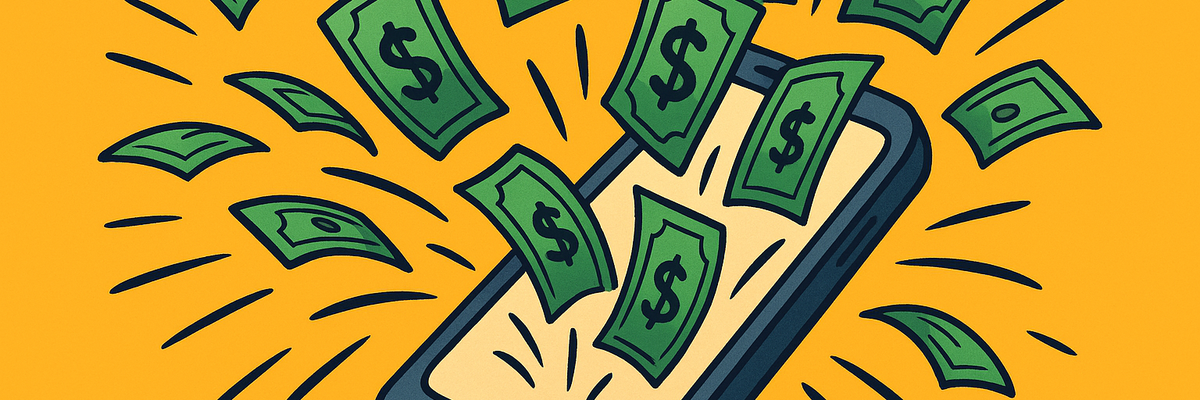The No. 1 Mistake People Make With High-Yield Savings Accounts

Ever heard of cash hoarding? I hadn't, until my cousin called me out.
I told him I had $30,000 sitting in my savings account, the humble beginning of my future multi-million empire. He just laughed and said, "Dude, you're hoarding cash. You need to learn how to invest."
Turns out, he was right. Too much idle cash can really drag down long-term growth.
That same $30,000 could grow into $500,000+ over 35 years if invested instead of parked in a savings account.
Why overloading your HYSA could be costing you big
High-yield savings accounts (HYSAs) are awesome… up to a point.
They're perfect for emergency funds and short-term goals. And some of the best HYSAs right now pay around 4.00% APY. That's a great interest rate!
But the truth is, they're not built for long-term growth.
That's where investing comes in.
Over the long haul, a simple stock market index fund has averaged returns of about 10% per year. That might not sound like a huge difference compared to 4%, but compound interest supercharges things.
Let's say you've got $30,000 in cash. Here's what that could look like over time depending on whether you leave it in a high-yield savings account or invest it instead:
| Years | Savings (4%) | Investing (10%) |
|---|---|---|
| 5 | $36,499 | $48,315 |
| 10 | $44,407 | $77,812 |
| 20 | $65,733 | $201,825 |
| 30 | $97,301 | $523,482 |
That's over $400,000 in missed gains just by keeping your money in savings instead of putting it to work.
The moral of the story is: Saving money in an HYSA is great for short-term stability. But if you want to build real wealth over time, you've gotta invest.
Still need an HYSA for short-term money? Check out CIT Platinum Savings where you can earn 4.00% APY for balances of $5,000 or more.
Try the bucket system for easier planning
Using "money buckets" basically means splitting your cash into different accounts based on what you're planning to use it for.
Here's how that might look (I actually use this system personally!)
Bucket 1: short-term money (0–2 years)
This is your "I need access to it anytime" cash. Think for situations like:
- Emergency fund (three to six months of expenses)
- Travel and fun money
- Upcoming big bills (taxes, insurance, home repairs)
All this money should be kept in an HYSA where it's safe, accessible, and earning high interest.
Bucket 2: mid-term money (2–5 years)
This bucket is for goals you're working toward in the near-ish future. You don't want to lock it up for decades, but don't need it tomorrow. Think savings goals like:
- Home down payment
- New car
- Sabbatical or a big move
While putting this money in an HYSA is still fine here (especially while rates are decent), you might also explore CDs or conservative investments to earn a little more.
Bucket 3: long-term money (5+ years)
This final bucket is tied to goals that are way down the road. Stuff like:
- Retirement savings
- College funds
- General wealth-building
Since you won't need this money for a long time, it's okay to invest it in assets with a bit more risk. Long-term investments have time to ride out the market's ups and downs.
Some of the easiest places to start are using a 401(k), IRA, or basic brokerage account.
If you're new to investing and looking for an easy start, explore our top-rated beginner-friendly platforms here to find the one that fits your needs.
The bottom line
If you're someone who likes to "keep it all in one place," it's time for a friendly reality check. Your high-yield savings account isn't meant to hold your entire life savings.
The biggest mistake wealth builders make is keeping too much cash in their HYSA for years on end.
Do yourself a favor and split up your cash into short-, mid-, and long-term buckets. Keep what you need handy -- and let the rest go to work for you.
Our Research Expert


